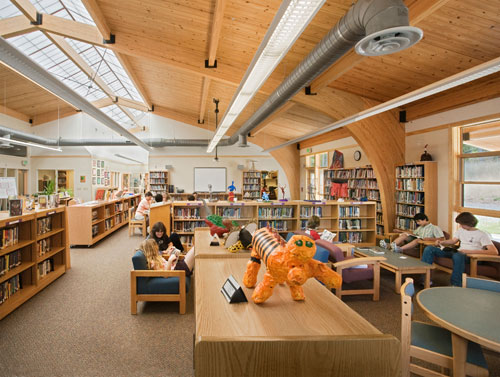A Natural Choice
At the 2005 World Summit, it was noted that sustainability requires the reconciliation of environmental, social and economic demands, the "three pillars" of sustainability. According to the U.S. Environmental Protection Agency, "Sustainability is based on a simple principle: Everything that we need for our survival and well-being depends, either directly or indirectly, on our natural environment. Sustainability creates and maintains the conditions under which humans and nature can exist in productive harmony, that permit fulfilling the social, economic and other requirements of present and future generations."1 According to the American Institute of Architects (AIA) Sustainability Discussion Group's definition of sustainability and carbon reduction, "Sustainability envisions the enduring prosperity of all living things. Sustainable design creates communities and buildings that advance enduring public and environmental well-being." While the Discussion Group endorses the broadest definition of sustainable design, it seeks action on a critical, focused, measurable and achievable priority: carbon neutral buildings and communities by 2030.2
Wood and the Environment
Life cycle assessment (LCA) is accepted worldwide as a means of evaluating and comparing the environmental impacts of building materials, products and complete structures—from resource extraction through manufacturing, transportation, installation, building operation, decommissioning and eventual disposal. Defined by the International Organization for Standardization, it allows building designers to compare different building designs based on their true environmental impacts and make informed choices about the materials they use.
LCA studies have consistently shown that wood is better for the environment than either steel or concrete in terms of embodied energy, air and water pollution, and carbon footprint.3 Research worldwide indicates that concrete construction is preferable to steel-frame construction in terms of energy use, but inferior to steel in generation of carbon dioxide (CO2) and other greenhouse gases. For example, a Swedish study of concrete and wood-framed buildings found higher energy and CO2 balances for the concrete structures.4 A New Zealand comparison of cradle-to-grave energy use and greenhouse gas emissions associated with four versions of an office building found that, as the amount of wood products increased versus concrete and steel, the amount of greenhouse gas emissions decreased.5 A U.S. Forest Service-sponsored life cycle assessment found that harvesting, transporting, manufacturing and using wood in lumber and panel products yields less greenhouse gases than other common building materials, such as concrete and steel. The study also found that wood-based wall systems can require significantly less total energy for manufacturing than thermally comparable steel or concrete structures.6
 |
Duke School, Durham, North Carolina, Fielding Nair International with DTW Architects & Planners Photo by Jerry Markatos |
It may be that these studies will begin to inform public policy. Already, based on the third study above, the U.S. Forest Service announced that it will "preferentially select wood in new building construction and actively look for opportunities to demonstrate the innovative use of wood as a green building material for all new structures of 10,000 square feet or more using recognized green building standards such as LEED®, Green Globes™ or the National Green Building Standard.7" The U.S. Department of Agriculture, the parent agency, will commit to greater use of wood as it fulfills President Barack Obama's Executive Order on Federal Leadership in Environmental, Energy, and Economic Performance.8 USDA Secretary Tom Vilsack directed all other USDA divisions to incorporate the Forest Service policy of using domestic sustainable wood products as the preferred green building material for all USDA facilities and buildings.









